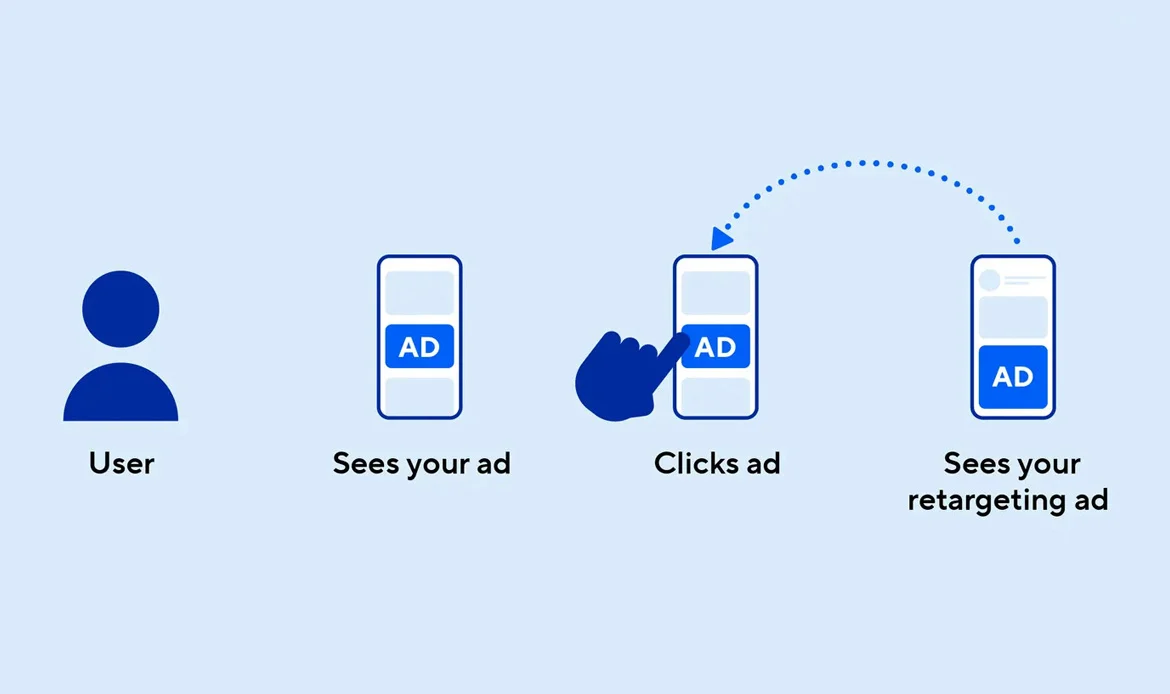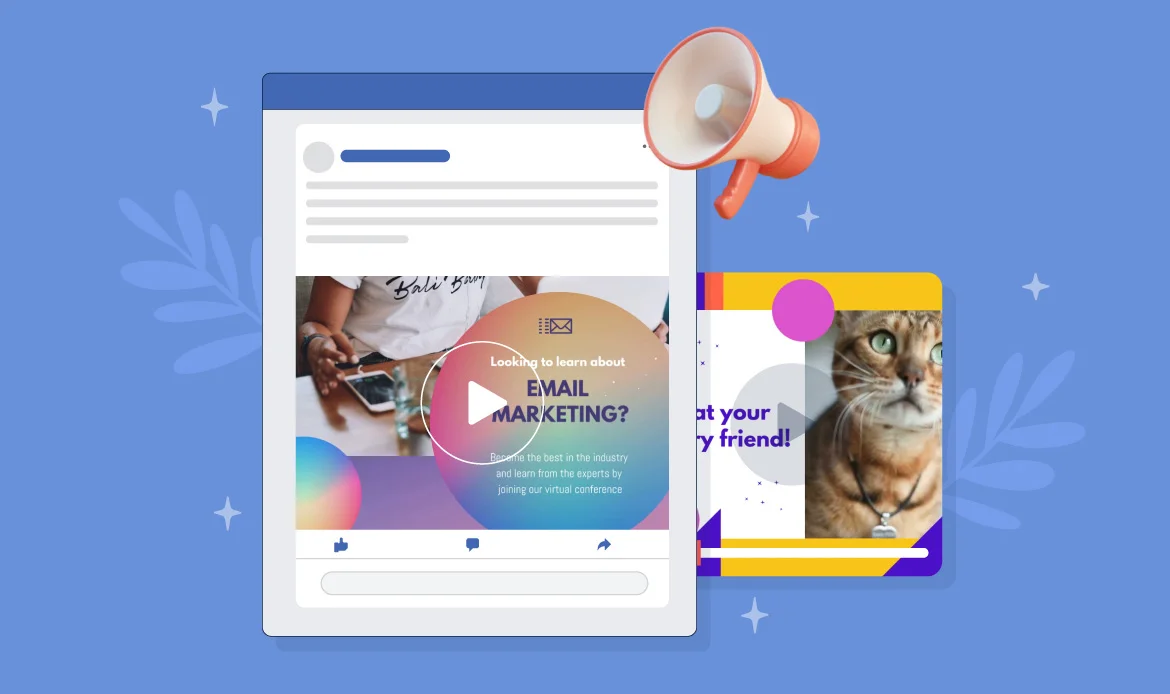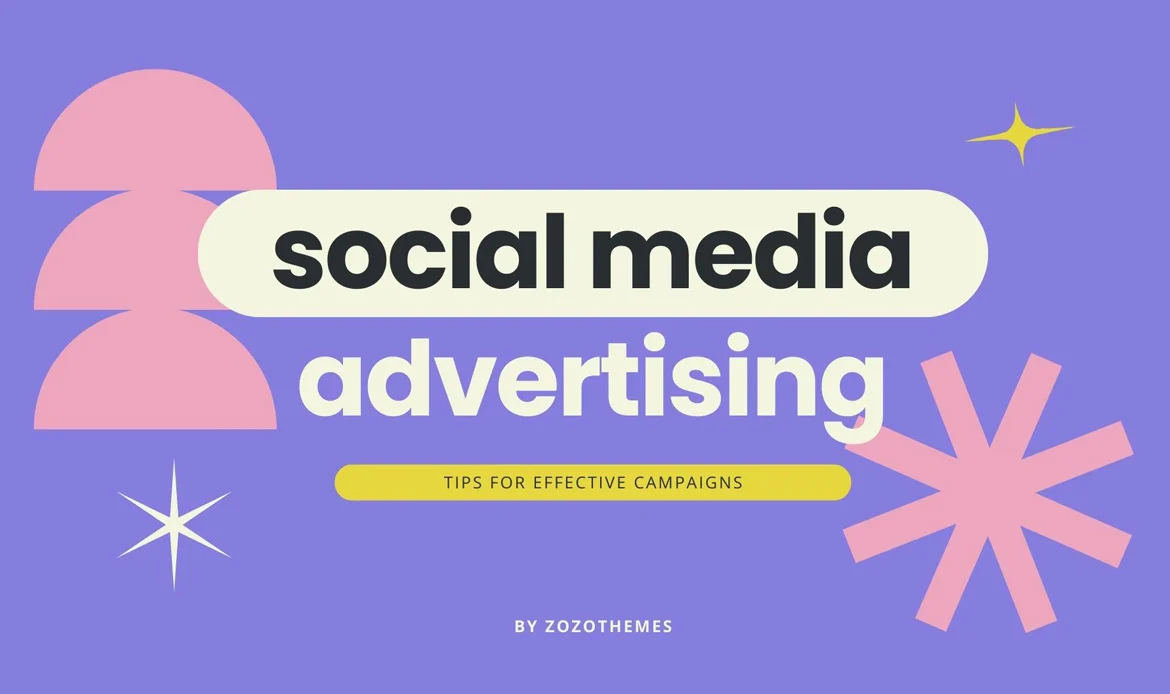Proven Strategies to Maximize Your Social Media Ad Performance
1. Define Clear Objectives
Before diving into creating ads, it’s crucial to define your campaign objectives. Are you looking to increase brand awareness, drive website traffic, generate leads, or boost sales? Each objective requires a different approach and set of metrics to measure success. For example, if your goal is to increase brand awareness, you might focus on metrics like reach and impressions. Conversely, if your objective is to drive sales, you’ll track conversions and return on ad spend (ROAS).Example:
Nike’s “Dream Crazy” campaign featuring Colin Kaepernick aimed to generate buzz and raise brand awareness by taking a stand on social issues. The campaign achieved widespread attention and sparked conversations, ultimately contributing to Nike’s brand visibility and reputation.
2. Know Your Audience
 Understanding your target audience is fundamental to creating effective social media ads. Conduct thorough research to identify your audience’s demographics, interests, behaviors, and pain points. Tailor your messaging and creative elements to resonate with your audience and address their needs.
Understanding your target audience is fundamental to creating effective social media ads. Conduct thorough research to identify your audience’s demographics, interests, behaviors, and pain points. Tailor your messaging and creative elements to resonate with your audience and address their needs.
Example:
Airbnb leverages user data to personalize its ads based on the preferences and interests of its target audience. By showcasing unique accommodations and experiences tailored to specific demographics, Airbnb effectively engages with its audience and drives bookings.
3. Compelling Visuals and Copy
 Capture users’ attention with visually appealing creatives and compelling copy. Use high-quality images or videos that are relevant to your brand and convey your message effectively. Craft concise and persuasive ad copy that highlights the benefits of your product or service and prompts users to take action.
Capture users’ attention with visually appealing creatives and compelling copy. Use high-quality images or videos that are relevant to your brand and convey your message effectively. Craft concise and persuasive ad copy that highlights the benefits of your product or service and prompts users to take action.
Example:
Coca-Cola’s “Share a Coke” campaign featured personalized bottles with popular names, encouraging customers to share their Coke experience on social media. The campaign’s eye-catching visuals and personalized approach drove engagement and user-generated content, amplifying brand reach and sales.
4. Test and Optimize
 Continuous testing and optimization are essential for maximizing the performance of your social media ads. Experiment with different ad formats, targeting options, messaging, and visuals to identify what resonates best with your audience. Analyze campaign data regularly and make data-driven adjustments to improve ad performance and ROI.
Continuous testing and optimization are essential for maximizing the performance of your social media ads. Experiment with different ad formats, targeting options, messaging, and visuals to identify what resonates best with your audience. Analyze campaign data regularly and make data-driven adjustments to improve ad performance and ROI.
Example:
HubSpot regularly conducts A/B tests on its social media ads to optimize performance. By testing different ad elements such as headlines, visuals, and targeting criteria, HubSpot identifies the most effective combinations and allocates budget accordingly, resulting in higher engagement and conversions.
5. Engage with Your Audience
 Social media is inherently interactive, so actively engage with your audience to foster relationships and build trust. Respond promptly to comments, messages, and inquiries, and encourage user-generated content through contests, polls, and user testimonials. Show appreciation for your followers and create a sense of community around your brand.
Social media is inherently interactive, so actively engage with your audience to foster relationships and build trust. Respond promptly to comments, messages, and inquiries, and encourage user-generated content through contests, polls, and user testimonials. Show appreciation for your followers and create a sense of community around your brand.
Example:
Starbucks encourages user engagement by featuring customer photos and stories on its social media channels. By reposting user-generated content and initiating conversations with followers, Starbucks strengthens its brand loyalty and creates a sense of belonging among its audience.
6. Utilize Targeting Options
Take advantage of the robust targeting options offered by social media platforms to reach the most relevant audience for your ads. Narrow down your audience based on demographics, interests, behaviors, location, and even past interactions with your brand. By targeting specific segments of users, you can ensure that your ads are seen by those most likely to engage and convert.Example:
A fitness apparel brand like Lululemon can target its ads specifically to active individuals interested in yoga, running, or gym workouts. By narrowing down the audience to fitness enthusiasts, Lululemon can maximize the effectiveness of its ads and drive higher conversion rates.
7. Incorporate Social Proof
 Include social proof elements such as customer testimonials, reviews, ratings, and user-generated content in your ads to build credibility and trust with your audience. Highlighting positive experiences from satisfied customers can influence purchasing decisions and alleviate any doubts potential customers may have about your products or services.
Include social proof elements such as customer testimonials, reviews, ratings, and user-generated content in your ads to build credibility and trust with your audience. Highlighting positive experiences from satisfied customers can influence purchasing decisions and alleviate any doubts potential customers may have about your products or services.
Example:
Amazon frequently includes customer reviews and ratings in its social media ads for products. By showcasing real feedback from customers, Amazon builds trust and confidence in its offerings, ultimately driving more conversions and sales.
8. Create Urgency and Scarcity
 Use psychological tactics like creating a sense of urgency or scarcity in your ads to prompt immediate action from viewers. Limited-time offers, exclusive deals, or countdown timers can motivate users to act quickly to avoid missing out on the opportunity, leading to higher conversion rates and sales.
Use psychological tactics like creating a sense of urgency or scarcity in your ads to prompt immediate action from viewers. Limited-time offers, exclusive deals, or countdown timers can motivate users to act quickly to avoid missing out on the opportunity, leading to higher conversion rates and sales.
Example:
Fashion retailer Zara often incorporates phrases like “Limited Stock Available” or “Flash Sale Ends Soon” in its social media ads to create urgency and drive immediate purchases. By leveraging scarcity, Zara encourages users to make swift buying decisions, resulting in increased sales.
9. Optimize for Mobile
 Given the widespread use of smartphones, it’s crucial to ensure that your social media ads are optimized for mobile devices. Design ads with mobile users in mind, using responsive layouts, clear visuals, and concise copy that is easy to read on smaller screens. Additionally, ensure fast loading timesfast loading times and seamless user experience to prevent users from bouncing off your ad.
Given the widespread use of smartphones, it’s crucial to ensure that your social media ads are optimized for mobile devices. Design ads with mobile users in mind, using responsive layouts, clear visuals, and concise copy that is easy to read on smaller screens. Additionally, ensure fast loading timesfast loading times and seamless user experience to prevent users from bouncing off your ad.
Example:
Instagram’s mobile-first approach to advertising allows brands to create visually captivating ads optimized for the platform’s mobile interface. By designing ads specifically for mobile users, brands can effectively engage with Instagram’s predominantly mobile audience and drive desired actions.
10. Track and Measure Performance
Implement robust tracking and analytics tools to monitor the performance of your social media advertising campaigns. Track key metrics such as click-through rates, conversion rates, cost per acquisition, and return on ad spend (ROAS) to evaluate the effectiveness of your ads and identify areas for improvement. Use insights from analytics to refine your targeting, messaging, and creative elements for future campaigns.Example:
Facebook Ads Manager provides comprehensive analytics and reporting features that allow advertisers to track the performance of their campaigns in real-time. By analyzing metrics like reach, engagement, and conversions, advertisers can gain valuable insights into the effectiveness of their ads and make informed decisions to optimize campaign performance.
11. Implement Retargeting Strategies
 Utilize retargeting techniques to re-engage users who have previously interacted with your brand but haven’t converted. Set up retargeting ads to target users who have visited your website, engaged with your social media posts, or abandoned their carts. By reminding these users of your products or services, you can encourage them to complete their purchase or take the desired action.
Utilize retargeting techniques to re-engage users who have previously interacted with your brand but haven’t converted. Set up retargeting ads to target users who have visited your website, engaged with your social media posts, or abandoned their carts. By reminding these users of your products or services, you can encourage them to complete their purchase or take the desired action.
Example:
Online retailer ASOS implements retargeting ads to reach users who have browsed specific products on their website but haven’t made a purchase. By displaying targeted ads featuring the products users have shown interest in, ASOS increases the likelihood of conversion and recaptures lost sales.
12. Leverage Influencer Partnerships
Collaborate with influencers in your industry to amplify your social media advertising efforts and reach a wider audience. Identify influencers whose values align with your brand and whose followers match your target demographic. Partner with influencers to create sponsored content or endorsement campaigns that promote your products or services authentically to their engaged audience.Example:
Fashion brand Fashion Nova frequently partners with influencers and celebrities to promote its clothing and accessories on social media. By leveraging the massive reach and influence of popular personalities, Fashion Nova expands its brand visibility and credibility among its target audience, driving sales and brand awareness.
13. Experiment with Video Ads
 Harness the power of video content to capture users’ attention and convey your message effectively. Create engaging video ads that tell a story, demonstrate your product in action, or showcase customer testimonials. Video ads often outperform other ad formats in terms of engagement and conversion rates, making them a valuable addition to your social media advertising strategy.
Harness the power of video content to capture users’ attention and convey your message effectively. Create engaging video ads that tell a story, demonstrate your product in action, or showcase customer testimonials. Video ads often outperform other ad formats in terms of engagement and conversion rates, making them a valuable addition to your social media advertising strategy.
Example:
GoPro utilizes captivating video content in its social media ads to showcase the versatility and quality of its action cameras. By sharing thrilling footage of extreme sports, adventures, and travel experiences, GoPro inspires its audience and drives interest in its products, ultimately leading to increased sales.
14. Monitor Competitive Landscape
Keep a close eye on your competitors’ social media advertising strategies and campaigns to gain insights into industry trends, audience preferences, and emerging opportunities. Analyze competitors’ ads, messaging, targeting tactics, and engagement levels to identify areas where you can differentiate and improve your own campaigns.Example:
Burger King closely monitors competitors’ social media advertising efforts to stay ahead in the fast-food industry. By analyzing rival ads and consumer responses, Burger King identifies gaps in the market and develops innovative campaigns that resonate with its audience, driving sales and market share.
15. Stay Consistent and Authentic
Maintain consistency in your brand voice, messaging, and visual identity across all social media advertising channels to reinforce brand recognition and trust. Be authentic and transparent in your communication with your audience, avoiding overly promotional or misleading content. Build genuine connections with your followers by sharing valuable content, responding to feedback, and showcasing your brand’s personality.Example:
Dove’s “Real Beauty” campaign promotes body positivity and self-acceptance by featuring diverse women in its ads. By championing authentic and inclusive representation, Dove establishes a strong emotional connection with its audience, earning their loyalty and support.16. Social Media Advertising Tactics
 Social media advertising tactics encompass a wide range of strategies aimed at maximizing the effectiveness of advertising campaigns on various social media platforms. Here are some key tactics that businesses can employ to optimize their social media advertising efforts:
Social media advertising tactics encompass a wide range of strategies aimed at maximizing the effectiveness of advertising campaigns on various social media platforms. Here are some key tactics that businesses can employ to optimize their social media advertising efforts:
Audience Segmentation in Social Media Advertising
Divide your target audience into smaller segments based on demographics, interests, behaviors, or past interactions with your brand. By segmenting your audience, you can tailor your messaging and creative elements to resonate with specific groups, increasing the relevance and effectiveness of your ads.Customized Messaging for Better Social Media Ads
Craft personalized messaging that speaks directly to the needs, interests, and pain points of your target audience segments. Use language and tone that resonates with each segment, addressing their unique challenges and offering solutions that meet their specific needs.A/B Testing to Optimize Social Media Advertising Campaigns
Experiment with different ad creatives, headlines, calls-to-action, and targeting options to identify what resonates best with your audience. Conduct A/B tests to compare the performance of different ad variations and optimize your campaigns based on data-driven insights.Dynamic Ads and Their Role in Social Media Advertising
Utilize dynamic ad formats that automatically generate personalized content based on user interactions and preferences. Dynamic ads can dynamically showcase products, recommendations, or offers tailored to each user, increasing relevance and driving higher engagement and conversions.Remarketing Strategies for Effective Social Media Ads
Implement remarketing strategies to re-engage users who have previously interacted with your brand but haven’t converted. Show targeted ads to users who have visited your website, engaged with your social media posts, or abandoned their carts, reminding them of your products or services and encouraging them to take action.Lookalike Audiences in Social Media Advertising
Create lookalike audiences based on characteristics similar to your existing customers or website visitors. Social media platforms use algorithms to identify users who share similarities with your current audience, allowing you to expand your reach and target new potential customers with similar traits and behaviors.Video Advertising to Boost Social Media Engagement
Incorporate video content into your social media advertising campaigns to capture users’ attention and convey your message effectively. Create engaging video ads that tell a story, demonstrate your product in action, or showcase customer testimonials, driving higher engagement and conversion rates compared to static ads.Influencer Collaborations for Powerful Social Media Advertising
Partner with influencers in your industry or niche to amplify your social media advertising efforts and reach a wider audience. Identify influencers whose values align with your brand and whose followers match your target demographic, and collaborate with them to create sponsored content or endorsement campaigns that promote your products or services authentically.Geo-Targeting Techniques in Social Media Ad Campaigns
Utilize geo-targeting options to target users based on their location, allowing you to tailor your ads to specific regions, cities, or even neighborhoods. Geo-targeting is particularly useful for local businesses looking to attract customers in their vicinity or for running location-specific promotions or events.Ad Retargeting for Maximum ROI in Social Media Advertising
Implement ad retargeting strategies to reconnect with users who have shown interest in your brand but haven’t converted. Show targeted ads to users who have previously visited your website, viewed specific products, or interacted with your social media content, reminding them of your offerings and encouraging them to complete their purchase. By incorporating these social media advertising tactics into your overall marketing strategy, you can optimize your campaigns for maximum effectiveness, reach, and return on investment (ROI). Experiment with different tactics, monitor performance metrics closely, and iterate based on data-driven insights to continuously improve the impact of your social media advertising efforts.FAQs About Social Media Advertising
1. What social media platforms should I advertise on?
Consider the demographics and behavior of your target audience to determine which platforms they frequent the most. Facebook, Instagram, Twitter, LinkedIn, and Pinterest are popular choices, but your decision should be based on where your audience is most active.
2. How much should I budget for social media advertising?
Your advertising budget will depend on various factors such as your campaign objectives, target audience size, ad formats, and platform selection. Start with a modest budget and adjust based on campaign performance and ROI.
3. What types of content perform best in social media ads?
Visual content such as images and videos tends to perform well in social media ads, as they are more engaging and attention-grabbing. Experiment with different types of content, storytelling techniques, and ad formats to see what resonates best with your audience.
4. Should I use paid or organic social media strategies?
Both paid and organic social media strategies have their place in a comprehensive marketing plan. Paid advertising allows you to reach a wider audience and drive immediate results, while organic strategies focus on building relationships and engagement over time. Ideally, a combination of both approaches yields the best results.
5. What role does creativity play in social media advertising?
Creativity is essential for capturing users’ attention and standing out in the crowded social media landscape. Experiment with innovative ideas, compelling visuals, and engaging storytelling to make your ads memorable and impactful.
6. What are some common pitfalls to avoid in social media advertising?
Avoid overly promotional content, irrelevant targeting, neglecting to test ad variations, and ignoring data insights. Additionally, ensure compliance with platform policies and regulations to prevent ad rejection or account suspension.
Final Thoughts
In the ever-evolving landscape of digital marketing, social media advertising continues to be a driving force for businesses worldwide. As we conclude this exploration of effective social media advertising campaigns, it’s clear that success in this realm requires a multifaceted approach. From defining clear objectives and understanding your audience to crafting compelling content and staying ahead of the curve with innovative strategies, the journey to impactful social media advertising is both challenging and rewarding. By implementing the tips and strategies outlined in this article, businesses can navigate the complexities of social media advertising with confidence and purpose. Whether you’re aiming to increase brand awareness, drive website traffic, or boost sales, the principles discussed here provide a solid foundation for building successful campaigns.Ready to Elevate Your Social Media Advertising?
Whether you’re promoting products, running ad campaigns, or growing your audience, our themes give you the edge to stand out in today’s competitive digital world. Start your social media success story today — and watch your brand thrive!


